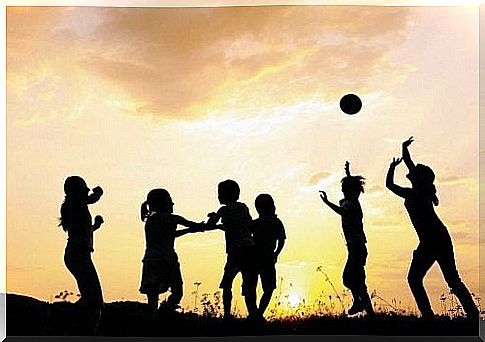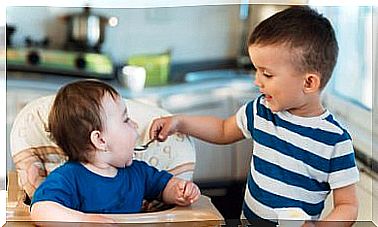Why Do Children Want Excitement And Risks In Their Games?

Playing is part of children’s lives. The role of parents is to protect children from real dangers, while leaving them free to explore and play as they please while being watched. Of course, the actions of parents must prioritize the safety of children. Certain games can pose a threat to children, and that is why many times they must be prevented and taught to be careful and face risks.
You may have ever heard parents concerned about the safety of their children when they are playing. It is normal, taking care of a child is part of the responsibility of being a parent. However, some recent research suggests that parents who are overly protective should give their children more opportunities to play outside and learn about the risks and dangers involved.
Allow game exploration
Risky games are those in which children test their limits and face uncertainty. Climbing a tree, building a fortress, or playing the flag game becomes an exciting challenge for any child. Research shows that these types of games are associated with enhancing physical activity, social skills, risk management skills, stamina, and self-confidence.

It is important that little ones do not always depend on parents or professionals to decide what is a risk game and what is not. Their own intuition through adult guidance may be more than enough for them to realize that they are able to differentiate emotion from actual risk.
Remember that just being kids makes them love adventures. Teaching your child to value for himself the limits between good and bad, dangerous and what is not, will help him in the future to be able to make more important decisions.
–French Tonucci–
The positive side of taking risks
It is good to give children the mental and physical space they need to calculate the levels of risk they need. It is important that they can play risky games but also that they know how to distinguish the real danger of the game. The mission of parents is to educate children and teach them to know the difference between play and danger, so that later they are the ones who have this ability to distinguish.
Preventing children from exploring uncertainty could have negative consequences for their health and development, such as increased sedentary behavior, anxiety and phobias. For all this, parents must be aware that they can allow their children to explore the environment, as long as they are taught with a reasonable distance the possible dangers.
Parents’ hopes and fears
Many parents recognize the importance of excitement and risky play in children, but are fearful and concerned that their children may be hurt or seriously injured. These concerns can often lead to parents being overprotective without even realizing it.
In other cases, parents may be concerned that their child is too shy and want to know how to help him get out of “that bubble” so that he learns to face the risks of gambling and enjoy the emotions.
In both cases, parents should be the children’s guides so that they always feel safe. Each parent knows their child and his or her needs better than anyone. That is why it is essential to find the balance point between teaching your child to be independent and taking care of him from dangers without letting him do anything on his own.
Both of the above approaches can be wrong if children’s abilities and preferences are completely ignored. How will children learn how the world works for themselves if an adult spends time telling them what to do and how to do it? The guide is fine, but remember that it is always advisable to leave a margin of action for the little ones.










